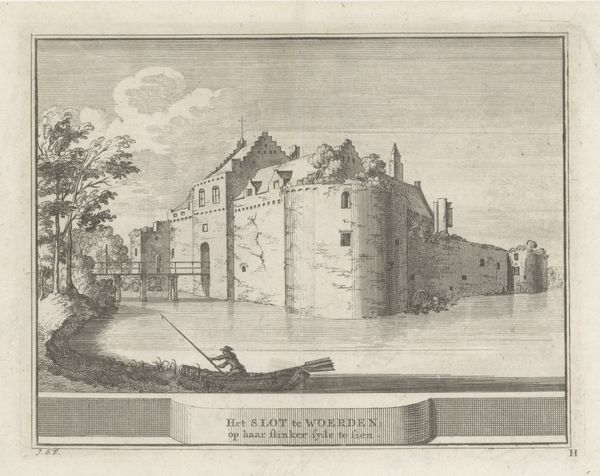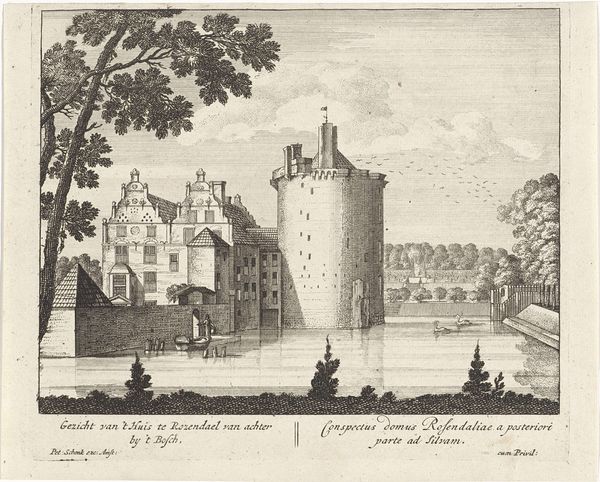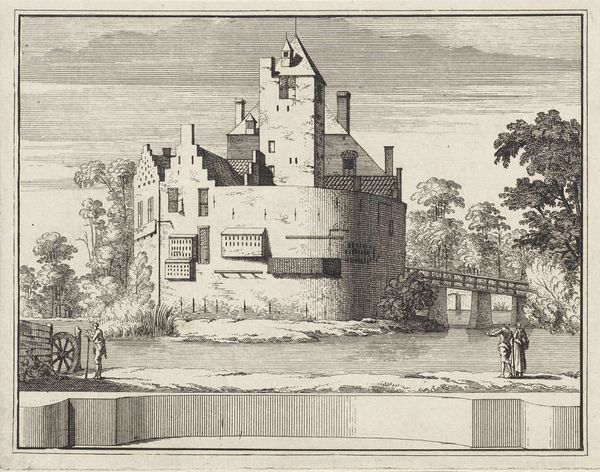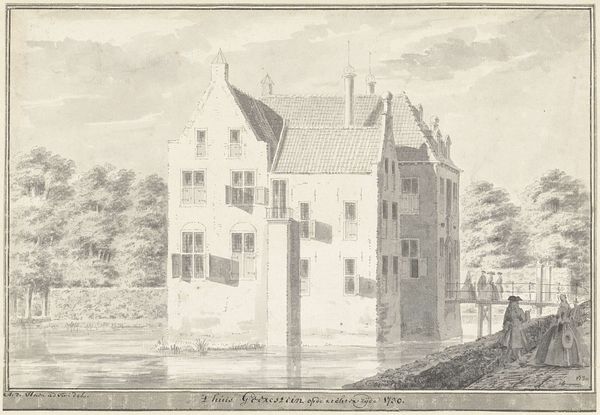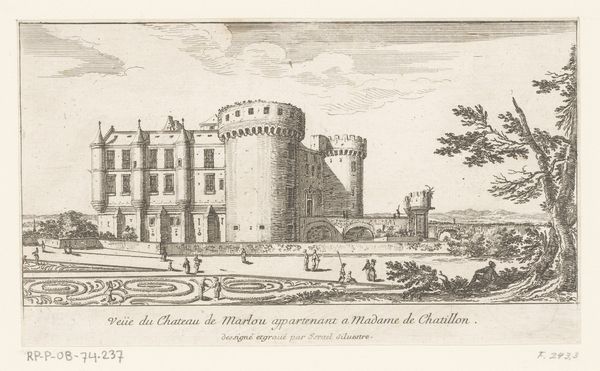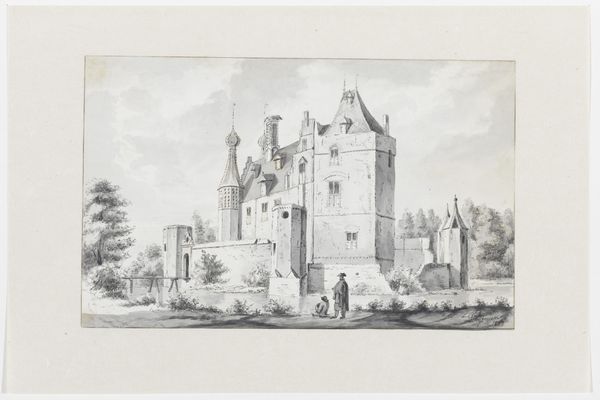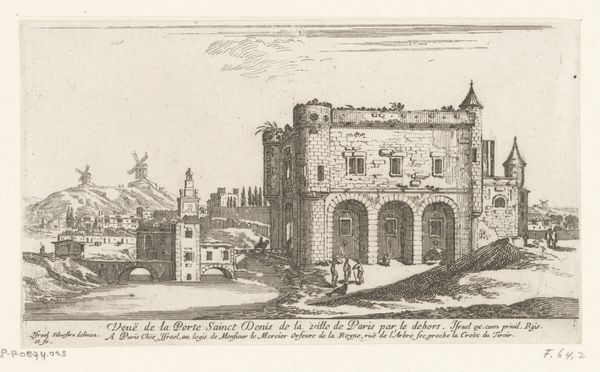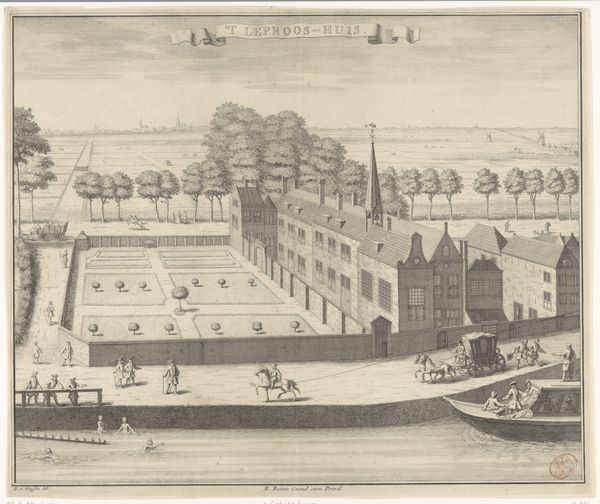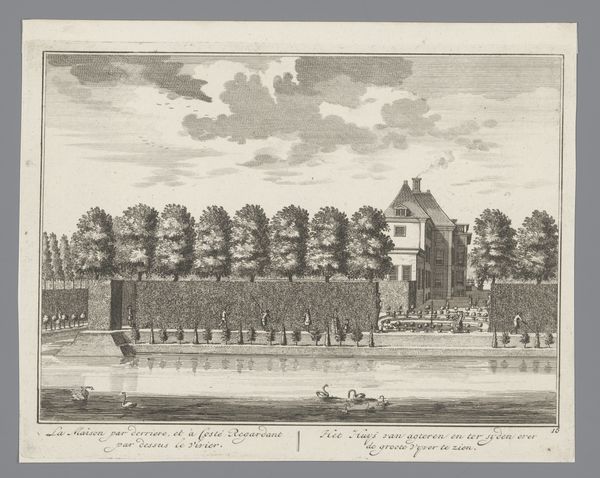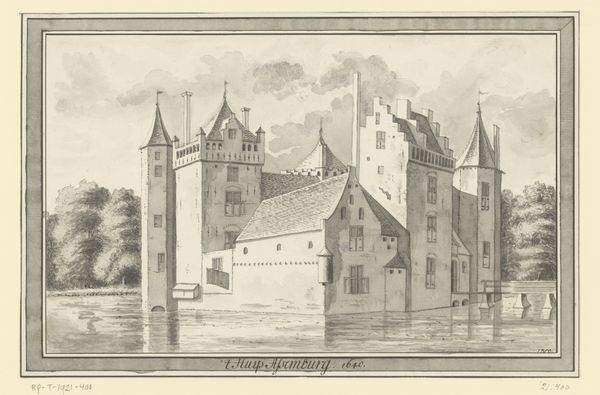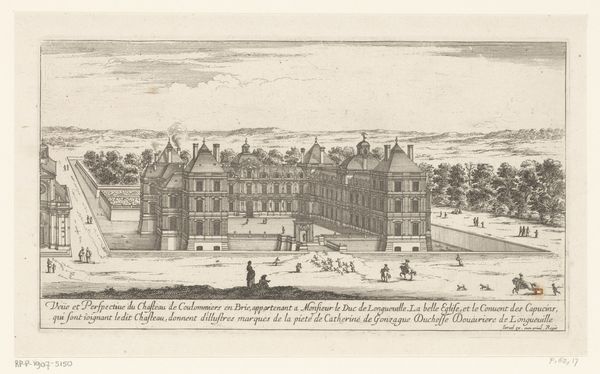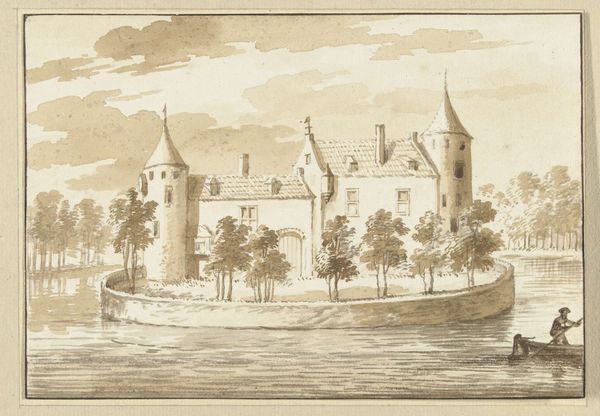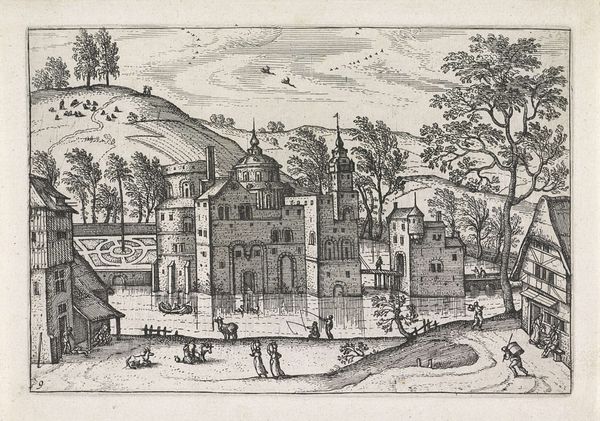
etching, engraving, architecture
#
baroque
#
etching
#
landscape
#
cityscape
#
engraving
#
architecture
Dimensions: height 202 mm, width 327 mm
Copyright: Rijks Museum: Open Domain
Curator: What a remarkably detailed piece. This engraving, called "Gezicht op Kasteel Rosendael" or "View of Rosendael Castle", dates from sometime between 1730 and 1770. The artist is currently listed as anonymous. Editor: The architecture looks grand, imposing. It’s also really impressive just how detailed this must have been to produce using engraving or etching tools in the mid-1700s. Curator: It's quite intriguing to think about the etching process. The amount of labor needed to achieve this level of detail would have been enormous. We also have to remember that copper plates for this size print would have been costly, reflecting the economic power needed for artistic production at the time. Editor: Absolutely. And this isn't just a pretty picture; it is broadcasting power and prestige. Look at the fortress-like structure—moats and imposing walls would separate the wealthy elite from common society. The work underscores ideas related to access and land rights throughout Europe. Curator: Indeed, this precise technique serves a clear function. Engravings such as this circulated widely and influenced architectural styles through their accuracy in replicating contemporary building aesthetics. We could even view prints such as this as almost like an early architectural catalogue or influencer marketing campaign. Editor: Precisely. Moreover, such images influenced social structures and individual experiences. By circulating ideals of elevated status or gender expectations related to social standing and wealth, images of castles reinforce normative behaviors or class hierarchies for certain populations while excluding others who lacked similar privileges at this point in history. Curator: The subtle shifts in tonal quality here result from varying the pressure applied during etching. Each line, no matter how minuscule, conveys a deliberate attempt by the craftsman involved towards presenting architectural specificity as closely possible within artistic form. Editor: To me, this is less about an objective reality, though, but rather creating the ideal—a political statement manifested through idyllic scenery of a protected space. This etching almost feels akin today as filtered pictures we encounter constantly throughout various contemporary media, and which continue defining privilege, exclusion and the status quo today. Curator: Fascinating insights; it seems examining closely production processes illuminates social and power dynamics through artistic output that are still impacting social inequities around materiality still affecting people around questions of property right now Editor: Precisely—by analyzing them now critically alongside new emerging theories!
Comments
No comments
Be the first to comment and join the conversation on the ultimate creative platform.
